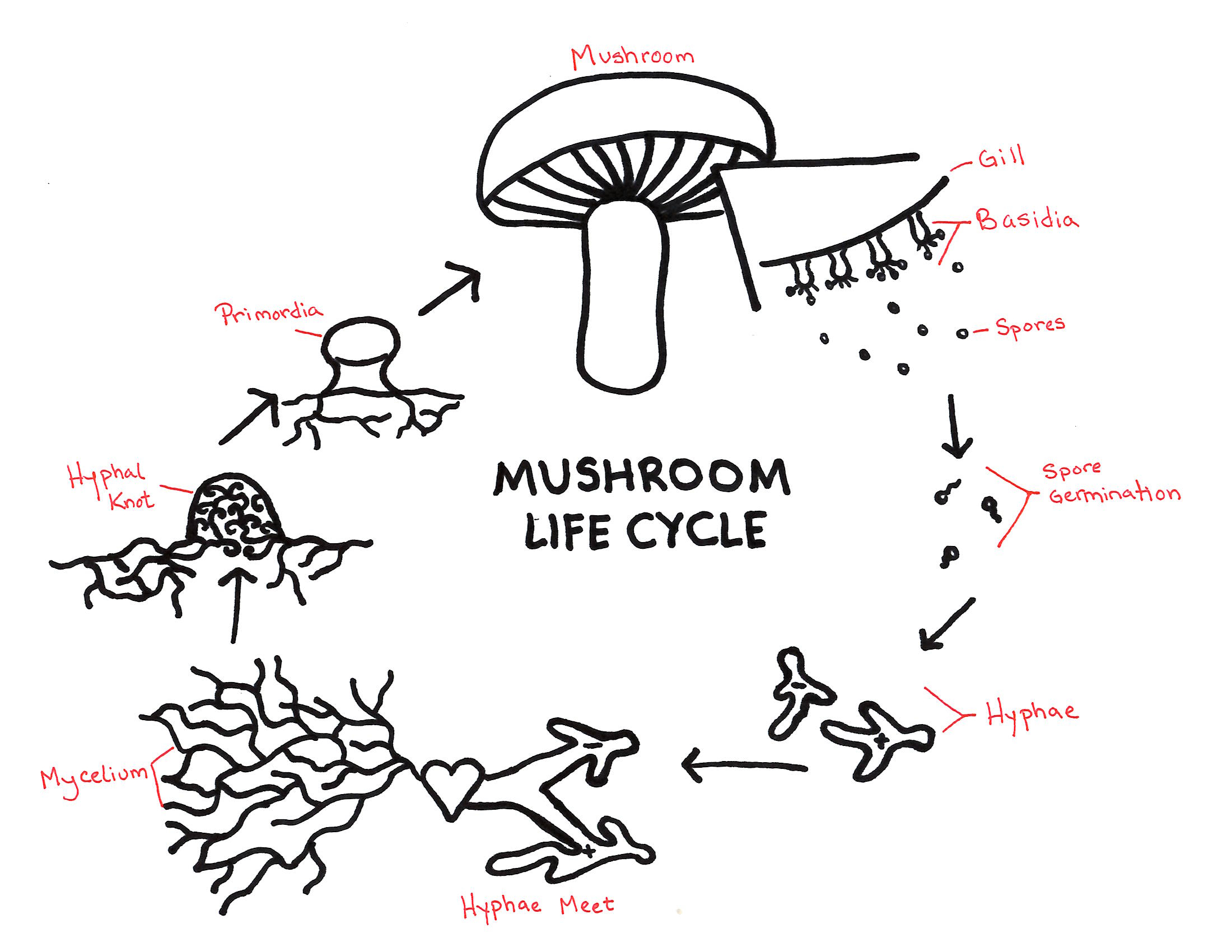the mushroom life cycle
the mushroom life cycle
For you to use mycelia as healing membranes, a basic understanding of the mushroom life cycle is helpful. Although we notice mushrooms when they pop up, their sudden appearance is the completion of cellular events largely hidden from view—until the inquisitive mycophile digs deeper. Although mycologists have a basic understanding of the mushroom life cycle, we are clueless how mushroom species interact with most other organisms coexisting in the same habitat. With each nuance revealed, the body intellect of mycology expands, and our knowledge slowly inches forward. What is so exciting about mycology is that the depth of undiscovered knowledge laying before us is more vast than our minds can imagine.
Mushrooms reproduce through microscopic spores, visible as dust when they collect en masse. When the moisture, temperature, and nutrients are right, spores freed from a mushroom (essentially mushroom seeds) germinate into threads of cells called hyphae. As each hypha grows and branches, it forms connections with other hyphae from compatible spores to create a mycelial mat, which matures, gathering nutrients and moisture. From mycelium, cells aggregate to form a primordium—called “pinheads” or baby mushrooms by growers. Under optimal conditions, the transformation from spores to mycelium to mushroom can take just a few days.

Commentaires
Enregistrer un commentaire